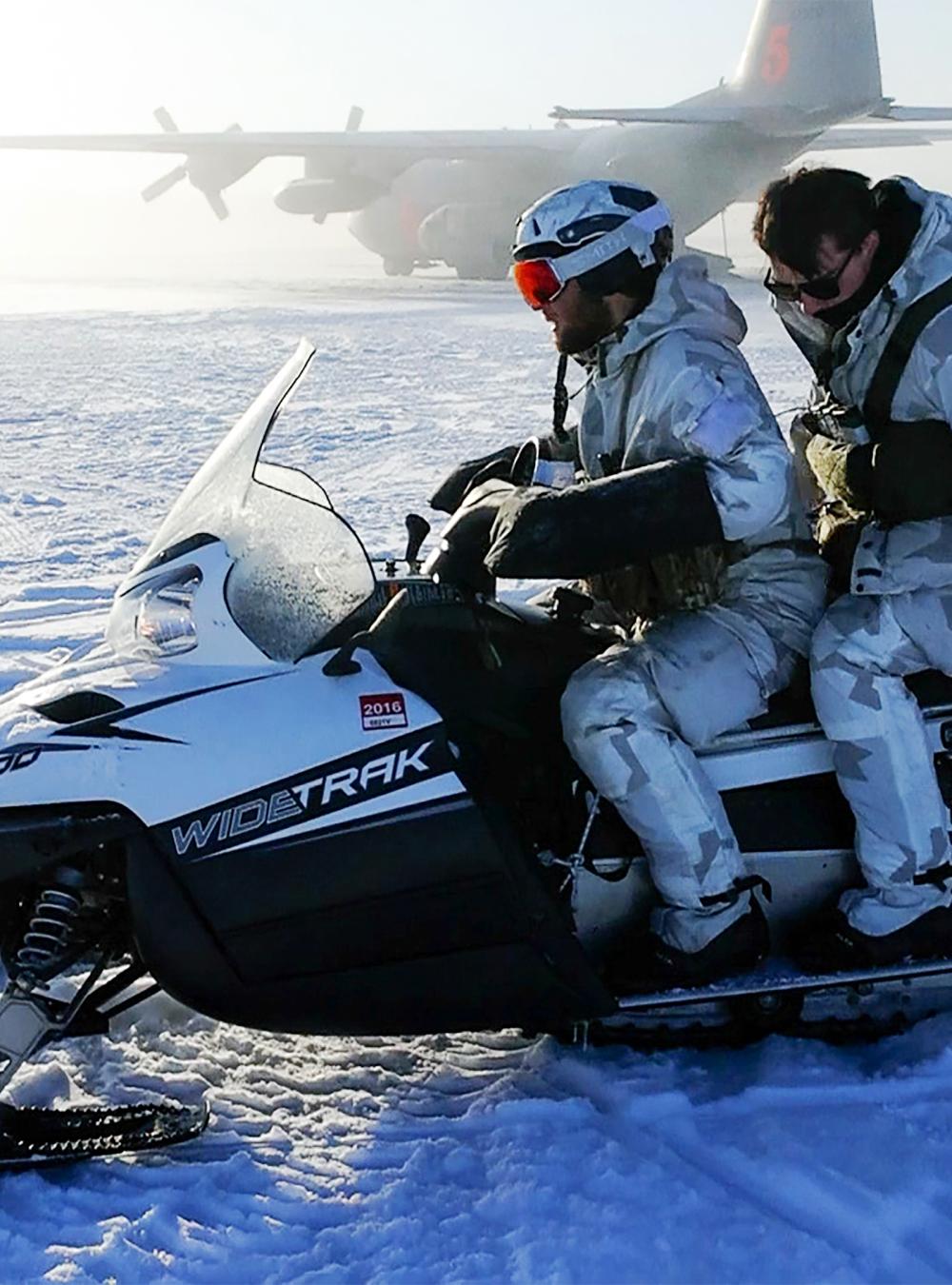As strategic competition comes to the Arctic, MITRE and our partners are helping design and test an operational energy microgrid to enhance DoD warfighting capabilities in the region.

MITRE Helps Power DoD’s Response in the World’s Harshest Region
At the top of the world, the challenges are human as well as technological. With Arctic temperatures, neither physical systems nor human systems may work the way we think they will.
The United States and Canada are two of eight Arctic nations, and the Arctic region is critical to defense of North America. As the impact of climate change accelerates, it will be vital for America and its allies to maintain peace and stability in the region.
There is, however, a critical energy technology gap in the Arctic if we're to counter threats from potential adversaries. High performance energy and power capabilities for extreme cold weather are needed to ensure military capabilities for Arctic operations, with an emphasis on reducing generator fuel resupply risk and providing scalable, flexible, and high-quality power for sensitive high energy demands.
To address this specific capability gap, MITRE is collaborating with NORAD and USNORTHCOM, and numerous other DoD partners to create an Arctic-capable operational energy microgrid. The Arctic Grid Energy Storage (AGES) project will enable operations at temperatures as low as -60°F (-51°C).
Winter lows in the Arctic can routinely reach such extreme cold temperatures that traditional fuels can freeze. Exposed skin can become frostbitten in minutes, making it difficult to conduct necessary repairs. And supplying these remote operations with steady sources of fuel can be a significant logistical undertaking.
“When you put a ring around the Arctic, there isn’t an enduring or lasting energy capability for different types of missions,” MITRE’s Ariel Castillo, chief engineer for advanced energy in MITRE’s Emerging Technology Innovation Center says. “One of the big reasons why is that we don’t know how various energy technologies will work in the extreme cold.”
The AGES system aims to provide reliable and efficient power to Arctic base camps, special operations, radar stations, communication nodes, and other critical Arctic applications.
Creating a System to Power Arctic Operations
The DoD needs a system for the Arctic that can supply stable, secure, and resilient power able to thrive in the harshest winter conditions.
Operational energy microgrids like AGES combine power generation, storage, and distribution, providing a baseline infrastructure capability that has become a significant focus for Arctic operations.
“The AGES system aims to provide reliable and efficient power to Arctic base camps, special operations, radar stations, communication nodes, and other critical Arctic applications,” U.S. Navy Commander Joel McMillan of NORAD and USNORTHCOM told the Defense Innovation Unit.
Currently, Arctic operators will build igloos to protect and warm their power generation and storage capabilities. While this is a rugged solution, it’s not a perfect one. MITRE and our partners want a more consistent—and more capable—solution.
While a multitude of partners and cosponsors are working to create the AGES system, MITRE serves as system integrator, applying our vast and varied technical expertise to make sure all the components work together.
“It’s good to have an objective adviser like MITRE on projects like this to bridge the gap between commercial and governmental groups,” Castillo says. “We can help the DoD plan and scale the devices, while also helping the commercial vendors who build them to understand Defense Department needs.”
A Test for the AGES Will Put New Ideas into the Field
Finding out what works will take deploying and demonstrating the technology, not solely through simulation or modeling, but in the real-life extreme cold of the Arctic. That is what makes the AGES project so important—we want to make sure the technology works before putting it in the hands of the DoD warfighter.
So, AGES is being readied for a real-world challenge through a testing and demonstration partnership with the Engineer Research and Development Center’s Cold Regions Research and Engineering Laboratory, and a transition partnership with the Expeditionary Energy and Sustainment Systems group. These partnerships are critical to the success of the project and will be a crucial test, not just for MITRE, but also for the numerous other sponsors and partners on the AGES project as we meet growing Arctic challenges.
As AGES powers up, it will enable DoD to fully enact its Arctic strategy through leveraging a new energy capability for extreme Arctic operations.
In addition to MITRE, NORAD, and USNORTHCOM, additional AGES program co-sponsors include:
- The Office of the Undersecretary of Defense Acquisition and Sustainment, Operational Energy Capability Improvement Fund
- The Under Secretary of Defense for Research and Engineering, Rapid Reaction Technology Office
- The Defense Innovation Unit
- The U.S. Army Corps of Engineers’ Engineer Research and Development Center’s (ERDC) Cold Regions Research and Engineering Laboratory (CRREL)
- The ERDC Construction Engineering Research Laboratory
- The Office of Naval Research
- The Army Combat Capabilities Development Command, Control, Computers, Communications, Cyber, Intelligence, Surveillance and Reconnaissance
- The U.S. Army Program Executive Office Combat Support and Combat Service Support, Project Manager Expeditionary Energy and Sustainment Systems (E2S2)
Join our community of innovators, learners, knowledge-sharers, and risk takers. View our Job Openings.